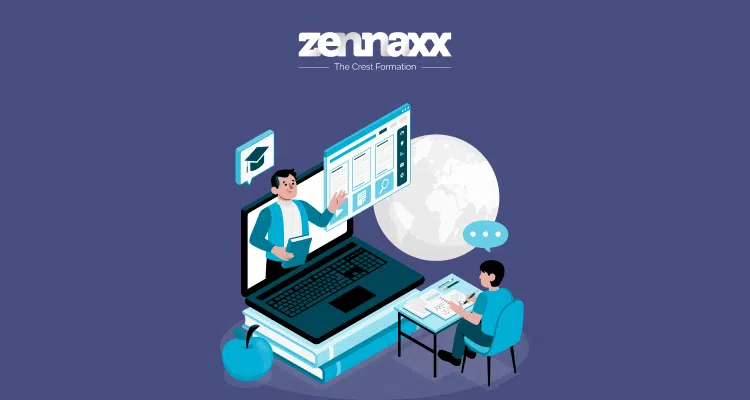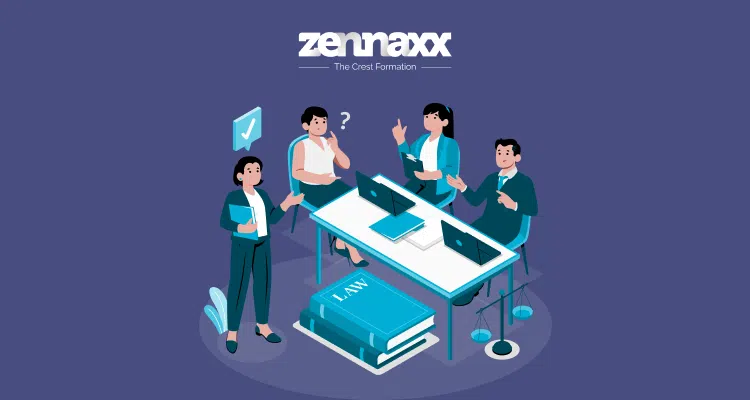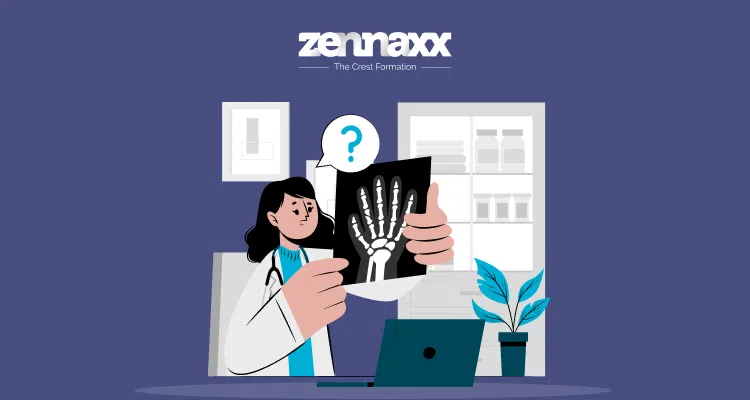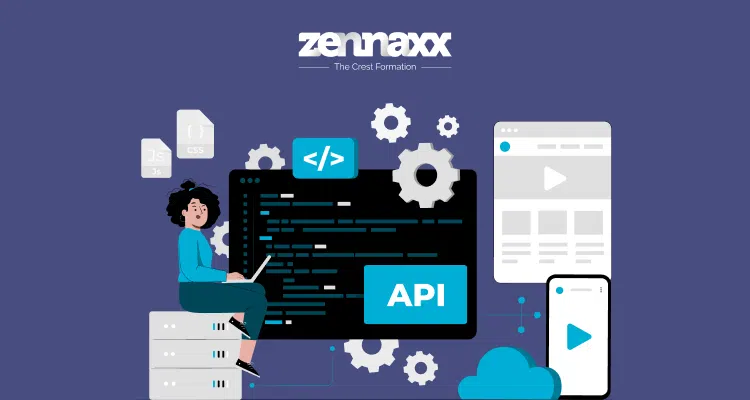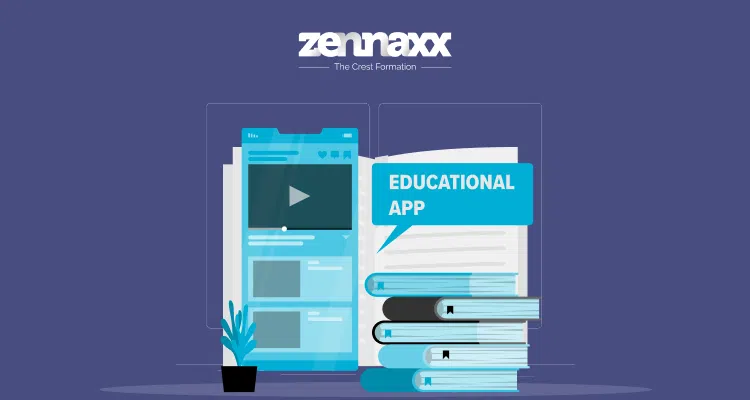People have become more serious about their health after the COVID-19 pandemic. The increase in health awareness has not only increased the medical field but has also started a huge rise in the development of online health applications.
Nowadays, everyone, from kids to adults, has jam-packed schedules with many activities, leaving little time for self-care.
There are many diet and nutrition apps available to solve this time supervision problem and keep recording daily health data. If you’re thinking about investing in creating one, you’re heading in the right direction.
You may be wondering how this will bring you success in your project. Take some minutes to read our blog, and we’ll explain how creating a nutrition app is a wise decision.
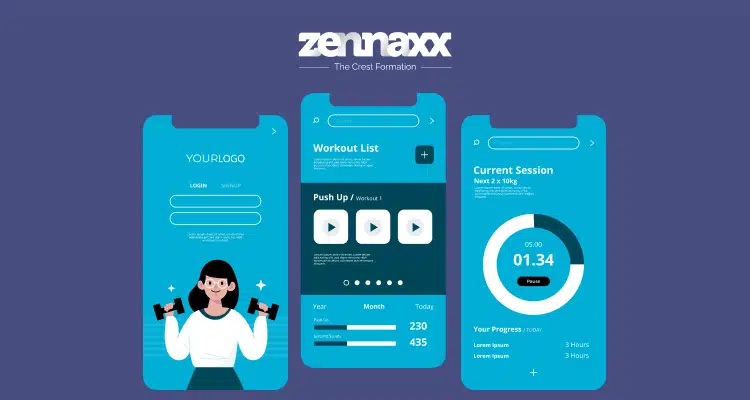
Creating a Fitness and Nutrition App
In January 2024, the world saw an increase in mobile fitness and workout app downloads, reaching approximately 14 million. This trend implies that people worldwide are becoming more interested in health and wellness. The eServices fitness market in the United States alone is expected to earn over 1.8 million US dollars in sales by 2024.
Before developing a diet and nutrition app, analyze the market scene. While food and nutrition tracking apps are popular, they are very competitive. Despite the saturation, the demand for health and fitness apps is gradually increasing.
According to statista.com, engagement rates for these apps have increased by 80% in the last three years, indicating a growing interest in adopting healthier lifestyles.
This gives prospective businesses an excellent opportunity to create a valuable product that caters to people wishing to improve their health and eating habits.
The rising market demand can be used to develop a diet and nutrition app that correctly meets consumer needs and aids in achieving wellness objectives.
Who Uses Nutrition and Diet Apps?
Building a nutrition app requires a thorough understanding of its users’ motivations. The app’s target audience is typically younger, aged 18 to 29, accounting for 26% of frequent meal-planning users.
Statista states that 17% of users are between 30 and 45. According to research published in Translational Behavioral Medicine, users share the following common goals:
Approximately 53% of people have set their goals for tracking their physical activity, realizing the need to monitor their exercise levels to stay fit.
Nearly 47% to 50% are worried about losing extra weight, indicating a significant desire for a healthier body mass.
Another 34% are keen on learning effective exercise routines, indicating a growing interest in adopting structured workout plans for better fitness outcomes. These numbers show that many people are focused on staying healthy and living better lives.
Classifying Diet And Nutrition Apps
Here are the main five types of diet and nutrition apps.
Nutrition
Nutrition apps help users maintain eating habits by monitoring calorie intake and managing dietary routines. They offer insights into the nutritional content of various foods and provide valuable tips for making informed dietary choices.
Weight loss diaries
These apps support users in reaching weight loss goals without compromising their health. They enable users to track their meals and water intake, monitor both calories burned and consumed, choose suitable fitness programs, and oversee their adherence to these programs.
Calorie counting and detox
Apps in this category cater to individuals who diligently monitor their dietary intake daily, irrespective of their specific goals or intentions.
Healthy food recipes
These applications help users create simple, tasty, and healthy dishes. They provide protein—and nutrition-rich recipes for a good diet that will take care of their health and well-being.
Comprehensive applications
The above diets and nutrition app development maintains comprehensive applications that provide every service. This application provides various features on one platform for users to stay ahead and maintain their health.
Deciding on the Type of App
If you want to know more about diet and nutrition app development, you have to have proper knowledge of every category of your application and select its working features.
This clarity will make deciding which features to add to your app easier. As indicated by daily usage, research published in Translational Behavioral Medicine reveals the following trends in app category popularity:
- 1. Fitness/workout apps
- 2. Healthy eating apps
- 3. Apps for enhancing overall health
- 4. Weight loss apps
- 5. Diet apps
- 6. Apps for weight maintenance
- 7. Apps for weight gain
Knowing about these categories will help you design your app to fit your users’ wants and needs.
Stages of Diet and Nutrition App Development
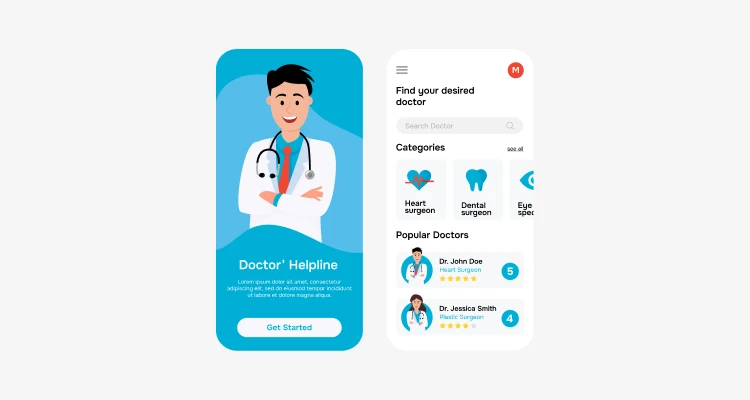
We explain how to find the right way, choose the right development technology, and plan properly. We break down this whole process into small points to make clear the path to creating a successful fitness app.
Stage 1: Whys, Whats, and Hows
When you’re starting to develop an app, there’s a lot to be thinking about right from the get-go:
1. What’s your app all about?
Define its purpose and functionality you want to implement in your nutrition application.
2. How can you make a nutrition app within your means?
Consider your budget, time, and quality expectations.
3. Should you opt for cross-platform or native development?
Decide which approach suits your project best.
4. Which features are must-haves for your app?
Identify the essentials.
5. Who’s on your team?
Assess your current workforce.
6. Do you need to expand your team?
Determine if you need more hands on deck to meet deadlines.
Analysts, tech gurus, and other experts might be required to create a clear vision for your project. At Zennaxx, we offer our Discovery Phase Expert service to guide you through this process.
We use your feedback and our expertise to describe the app development journey. This involves outlining the procedures, planning deadlines and prices, selecting team size, and recommending resource-optimization solutions depending on your needs.
Stage 2: Hire the right partnering company
Were you looking for the ideal team to develop your nutrition app idea? It might be challenging, especially if you are starting from scratch. Building a team from scratch, whether locally or globally, takes months.
Consider collaborating with a dependable, professional, and supportive team that will lead you from the first concept to the app’s debut and beyond. A top-notch nutrition app that exceeds your expectations.
Here’s what you need:
- 1. Access to a team with the right expertise or can quickly assemble it—people who don’t just talk about building apps but have a proven track record of doing it.
- 2. Honest feedback throughout the process, ensuring transparency and building trust for a successful partnership.
- 3. A team that genuinely cares about your app’s performance and your company’s reputation and values your input.
- 4. Flexibility to adapt to changes, whether adjusting the budget or scaling up quickly in response to demand.
For a better-developed experience team and guidance, you can connect with our experts to get guidance.
Stage 3: MVP development
Are you starting to develop a diet application? The actual building process begins at stage 3 when you create what is known as a minimum viable product (MVP).
This MVP is similar to a rudimentary version of your software, with only the most necessary functions included, such as registration and profile creation.
You can use this MVP to attract potential sponsors or launch it as a free beta version with optional in-app purchases. Doing this can help you start making money from your app early on, build an audience, and establish your app’s reputation.
Plus, an MVP lets you test out which features work well and which don’t fit into your nutrition and dieting app. For more detailed information, About MVP Read our blog

Stage 4: Final tech stack choice
Choosing the correct technology for your project is important, whether you’ve already started with a Minimum Viable Product (MVP). Your technology stack must meet several critical criteria:
- 1. Modern, but not just a passing trend that will lose relevance quickly.
- 2. Scalable, so it can grow alongside your audience and any new features you add.
- 3. Capable of integrating with IoT technologies, especially if you plan to connect your app with wearables or other devices.
- 4. Affordable, considering that rare technologies often have higher salary expectations for skilled professionals.
Ideally, you’ll have a reliable technical partner to help you choose the perfect stack. If you’re still searching for one, contact us for the right recommendation! We’ll thoroughly research your project and recommend the most suitable technologies.
Stage 5: The development (of the final version)
At this phase, we’re basically building up what we did for the MVP (Minimum Viable Product). The team working on your project must be highly skilled in creating an excellent nutrition app that meets your requirements and complements your company’s goals.
However, you must receive information during this process. At Zennaxx, transparency and keeping you informed are important to us. Our approach is to keep those contact channels open and provide you with frequent updates.
Stage 6: Testing the diet app
It is important to try out your diet app after creating it to win the market race. You can’t rely solely on the people who created it to see if it’s working properly.
It is preferable to have specialists about identifying and resolving issues. They can use special tools and tricks to ensure your app works well and is ready to market.
If you skip this step, your app’s performance and popularity may suffer. So, it’s important to have everything thoroughly tested.
If you don’t have an expert at this on your team, you can hire someone from outside. This can be a quick and cost-effective way to ensure that your app is top-notch.
Stage 7: Launch and feedback analysis
After developing your diet tracker app, the next stage is to release it concurrently with your marketing campaign.
Pay close attention to the early reviews and customer service correspondence, as they can provide insightful information for improving subsequent iterations.
Working on every stage may increase the changes in your diet application, increase its popularity in the market, and lead to its successful launch.
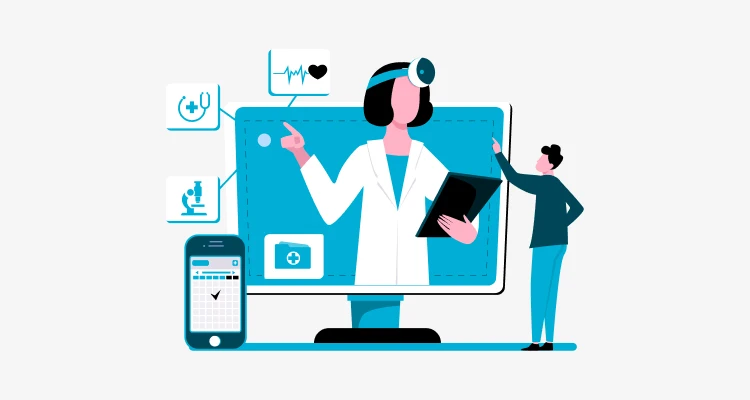
Key Features to Add in Diet and Nutrition App Development
You can easily develop a simple and useful diet and nutrition app if you have the necessary features and knowledge.
If you want to understand every element and basic feature of the diet and nutrition app, this section will shed some light on the fitness application’s key features.
1. Registration
To start using the diet and nutrition app, users must register by confirming their email, phone number, or other details. Another secure way to verify their identity is by generating a one-time password (OTP).
2. User Dashboard
The dashboard is where users find all their important information. Here, they can check their key performance indicators (KPIs), goals, and more.
This feature gives users a quick summary of their progress, motivating them to keep going.
3. Calendar
The calendar function is an important part of any diet and nutrition software. Because of this functionality, users can effectively plan and arrange their meal regimens.
Users can schedule meal plans, set reminders for consumption times, and track their progress over time.
By adding a calendar feature, the app facilitates better time management and adherence to dietary goals for its users.
4. Recipe Directory
Instead of manually curating a few recipes, the app can access a large recipe directory from third-party service providers.
This directory provides visitors with access to a library of thousands of recipes. By using this external information, the software saves time and money while offering users a wide range of gourmet alternatives at their fingertips.
5. Push Notification
Push notifications keep users informed about new programs, diet plans, competitions, and other app updates.
Look for iOS or Android development services that can build an app with this essential feature.
6. Meal Database
Given the significance of monitoring total nutritional intake, the app has an extensive meal database.
Users can manually enter comprehensive data regarding the macronutrients—carbohydrates, proteins, and fats—they consume regularly.
This feature enables users to gain insights into their dietary habits, identify areas for improvement, and make informed decisions regarding their nutrition goals.
7. Search
With the app’s advanced search tool, users may filter and personalize their search queries.
They can further refine their search parameters to acquire the most relevant results, regardless of whether they are looking for particular diet plans, recipes, or nutritional information.
The application provides customized search features that improve the user experience and speed up information retrieval.
8. Social Networking
The software includes social networking features to boost community involvement and user interaction.
Users can share their favourite diet plans, recipes, and success stories with friends and followers on social networking. The software grows its user base, increases brand visibility, and allows users to share expertise.
9.Rating and Reviews
The app features a rating and review system to promote user input and openness. After completing a diet plan or program, customers can score their experience and leave thorough feedback.
These user-generated insights enable potential users to make informed decisions and obtain useful perspectives on the effectiveness of various diet and nutrition methods.
Cover every feature if you want to create a popular diet and nutrition app. This feature will create a smoother and better user experience for your fitness application.
But our experts are always trying to create the best out of the thousand, so they also share some advanced feature lists to make your application stand out and attract more users.
Planning Healthcare App Development?
User-friendly mobile apps and responsive platforms can improve patient engagement and streamline healthcare delivery by enabling secure and smooth interactions that lead to better results.
Advance Features to Add in Diet and Nutrition App Development
Health app market competition is also affecting your project’s success. Every flexible and basic health application comes with new features to beat any competitor in the market.
Here are some advanced health application feature ideas to implement in your project.
1. Calorie Tracker
Provide consumers with a thorough calorie tracking option to easily check their daily intake.
Collaborate with your software development team to construct an intuitive dashboard displaying detailed user progress reports.
Ensure the dashboard is user-friendly and not overly complex so customers can easily track their calories.
2. Recipe Book
Enhance the recipe book feature by including a diverse selection of healthful dishes organized by components, calories, and dietary preferences.
Introduce multimedia elements, including images, videos, and voice directions, to increase user engagement.
By offering a wide and dynamic recipe library, you may fascinate consumers and encourage them to try new culinary experiences.
3. Shopping List
Develop a flexible shopping list tool to improve users’ grocery shopping experiences.
Allow users to manually add goods, input recipe ingredients, and manage their shopping lists from within the app. This simplicity boosts consumer pleasure and helps promote dietary compliance.
4. Live Nutritionist
Add value to your app by providing live consultations with certified dietitians and nutritionists. Allow consumers to obtain professional and individualized assistance directly from the app.
Consider including this functionality as part of a freemium or premium membership plan to accommodate various user preferences and company goals.
5. Diet Plans
People can achieve their health goals by creating customized food regimens based on their needs and interests. Provide detailed meal plans, dietary recommendations, and calorie intake based on the user’s goals and dietary needs.
6. Barcode Scanner
Increase user convenience by including a barcode scanning tool that allows users to easily access nutritional data.
Consumers can quickly access precise nutritional information by scanning the barcodes on packaged meals. This unique feature makes tracking simpler and distinguishes your program from competitors.
7. Health Goals
Users can specify their health objectives within the app to make goal-setting and progress tracking easier.
Allow people to set specific health goals, such as building muscle mass or decreasing weight, and track their progress over time. Visualize user progress and milestones to motivate and increase accountability.
By integrating these advanced features with an expert development team into your diet and nutrition app, you can create a unique and compelling user experience.
These features differentiate your app from competitors and enhance user engagement and satisfaction. Our professionals will assist you with further information on your chosen project.
Monetization Models for Your Diet App
The Internet offers many ways to earn money from your health application. After achieving popularity and increasing the number of users, you can start earning money by monetizing your health application easily through various monetization models.
Some basic scenarios of monetizing your health app to generate lots of revenue are like:
Subscription-Based Model with Tiered Plans
Provide users a subscription-based tiered option customized to their specific demands and budgets.
For example, the plan may include features like calorie tracking and meal planning.
In-advanced premium plans may include features like personalized meal plans, advanced analytics, and access to exclusive content such as recipes from renowned nutritionists or fitness experts.
In-App Purchases for Premium Content
Make in-app purchases to unlock premium content or features within the app. This could include access to specialist nutrition programs (for example, ketogenic, vegetarian, or gluten-free), advanced workout regimens, or ad-free browsing.
Allow consumers to buy these things on demand, allowing them to customize their experience based on their individual goals and interests.
Targeted Advertising and Sponsorships
Use targeted advertising within the app to increase revenue. Partner with relevant health and wellness brands to display ads based on user demographics, preferences, and behaviour.
Consider sponsored content or relationships with nutrition businesses, fitness influencers, or wellness organizations.
Ensure that advertisements are non-intrusive and appropriate to the app’s target audience to keep users engaged and satisfied.
Affiliate Marketing for Health Products
Integrate affiliate marketing into the app by promoting relevant health products or services to users.
Partner with reputable brands in the nutrition, fitness, and wellness space and earn commissions for referrals or purchases made through affiliate links within the app.
This could include recommending supplements, workout equipment, meal delivery services, or cooking gadgets that align with the app’s focus on healthy living and nutrition.
Premium Coaching Services and Consultations
Provide premium coaching services and personalized consultations within the app for users needing more assistance and guidance on their wellness journey.
This might include introducing users to licensed nutritionists, dietitians, or personal trainers for virtual consultations, food planning assistance, or fitness coaching sessions.
Users are charged per session or subscription for access to these premium services, which provide essential insights and knowledge to guide them in achieving their health goals.
Your user will gladly pay for your health application subscription if you provide proper support and better health-related suggestions. This way, you’ll be able to earn money from your diet and health applications.
Transform your business with app development
Zennaxx, a leading software development firm in Canada, has delivered 700+ bespoke solutions spanning various industries.
How Much Does It Cost to Create Diet and Nutrition App Development?
The development cost of a diet and nutrition app depends on several factors, primarily the application’s complexity.
The cost estimation varies based on the design intricacy, with a simple design averaging $7000, a complex design around $20,000, and a professional design at approximately $25,000.
Developer charges also significantly impact the overall cost. In the UK, hourly rates range from $40 to $90; in the US, they span from $45 to $80. European developers charge between $55 to $155 per hour.
Indian and Canadian developers, known for their cost-effectiveness, charge $25 to $35 per hour.
You can optimize costs by outsourcing to countries such as India and Canada, decreasing expenses without sacrificing quality.
Implementing agile methodology and open lines of communication with developers can help speed the development process.
FAQ for Diet and Nutrition app development
- How long does it take to make a nutrition app?
- Building a diet and nutrition app usually takes about 3–4 months, or it mostly depends on the developer’s expertise and experience. A successful health app takes around 4–5 months to run and generate good revenue from the market.
- How do you choose nutrition app developers?
- When picking a team or developers for your diet and nutrition app, look at their experience and background projects. If you’re looking for a team or software development company, check the portfolio and customer reviews on the website and Google. Creating a diet app has its challenges, so it’s important to have a skill development team that can also listen to your thoughts and other people’s needs.
- What are the problems you may face during diet nutrition app development?
- There are a few things that could go wrong during diet app development. You might not accurately predict the time and money it will take, causing delays and new market features. Also, you might hire developers who aren’t very good and use old and new technology, which can slow down progress.
- What is the Revenue Model of Diet and Nutrition Apps?
- So these are many typical ways that diet and nutrition apps make money:
- Subscription-based: Users pay a monthly or yearly fee for access to premium features.
- In-app purchases: Users can buy additional content or features within the app.
- Advertising and sponsorship: Apps display ads or collaborate with brands for revenue.
- How Does Diet and Nutrition App Work?
- Diet and nutrition apps often function similarly, intending to aid users in maintaining a healthier lifestyle and daily routine. They create every-second records and provide instructions by studying the user’s daily routine patterns and dietary habits. These apps usually offer features like calorie tracking, meal planning, water intake monitoring, and exercise tracking to help users achieve their health goals effectively.


